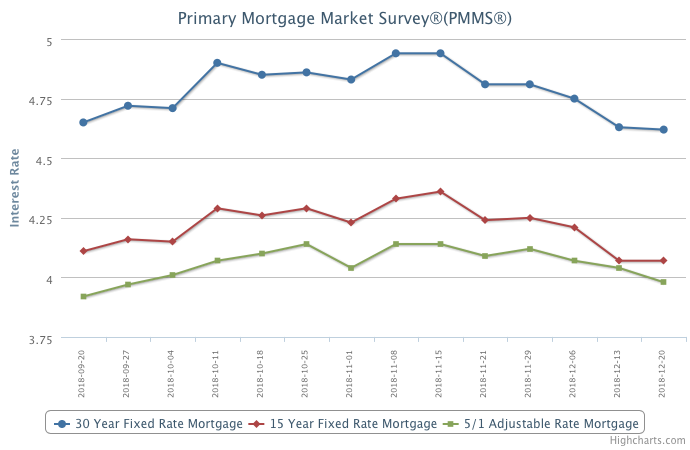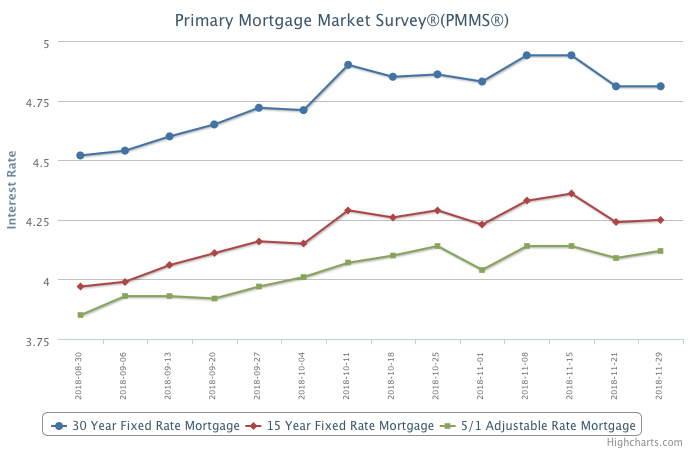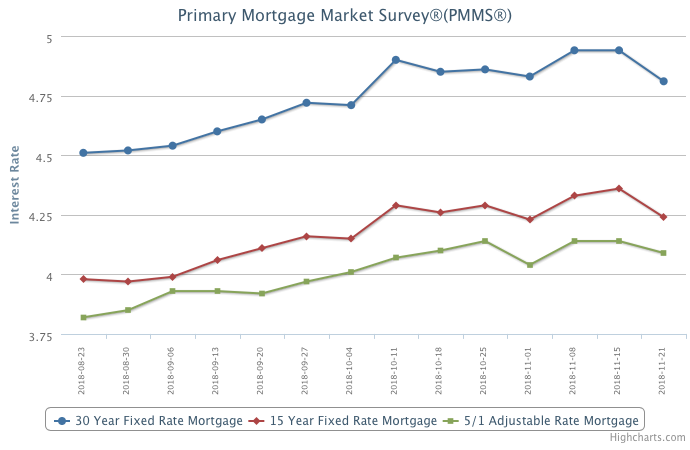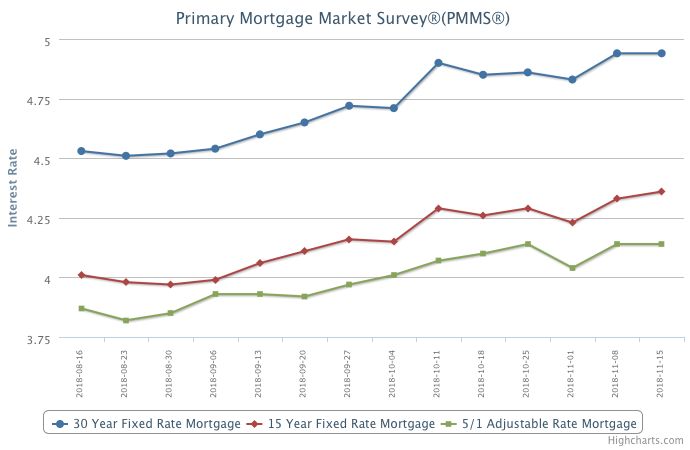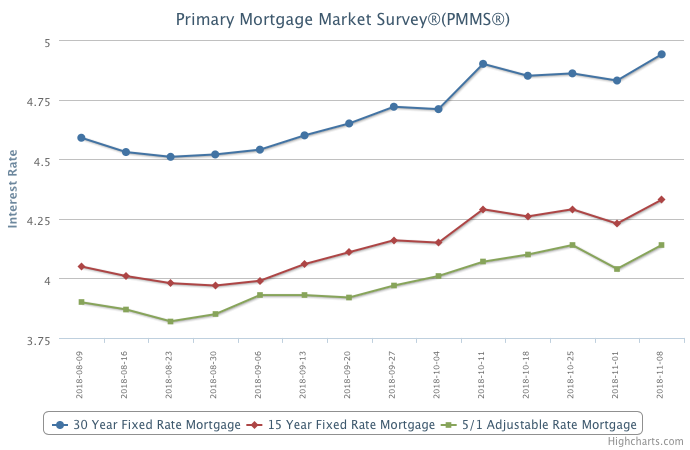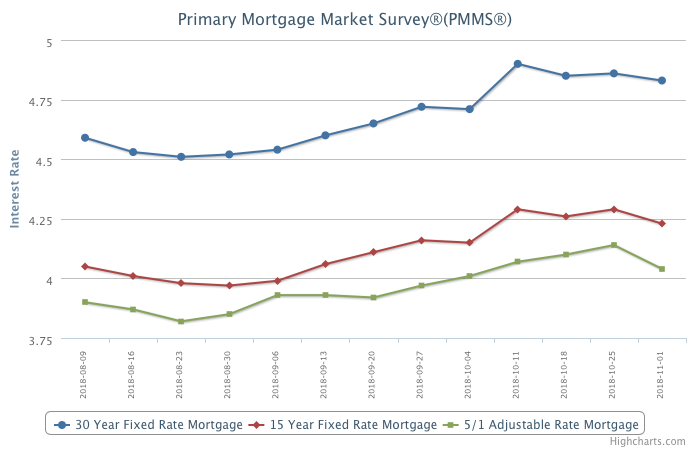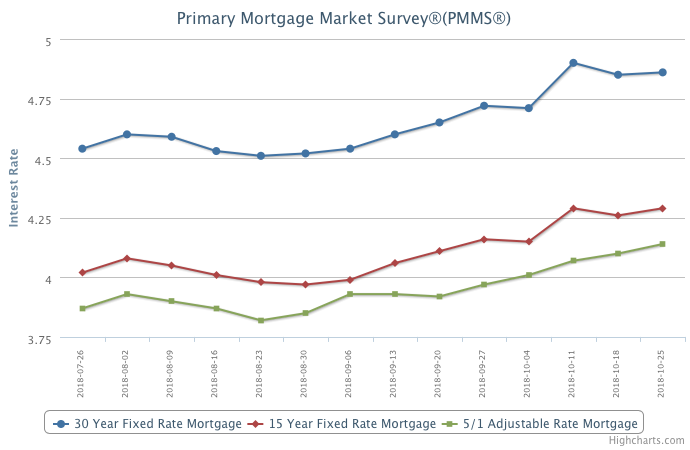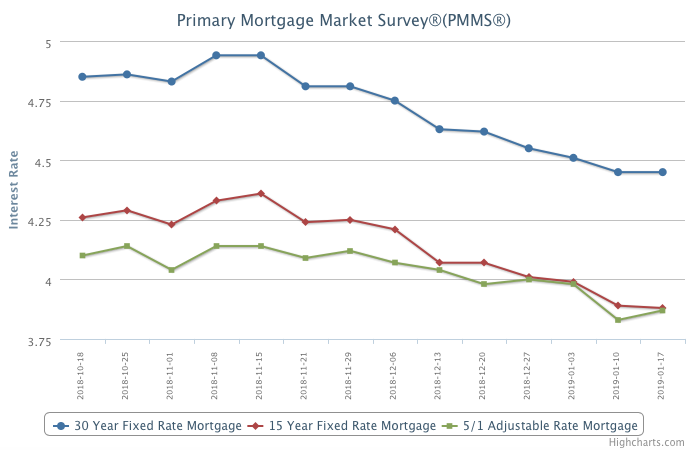
January 17, 2019
Weaker manufacturing data and a more dovish tone from the Federal Reserve left mortgage rates unchanged relative to last week. However, interest rate-sensitive sectors of the economy – such as consumer mortgage demand and homebuilder construction sentiment – are on the mend, which indicates that lower interest rates are beginning to have a positive impact on some segments of the economy.
Information provided by Freddie Mac.

